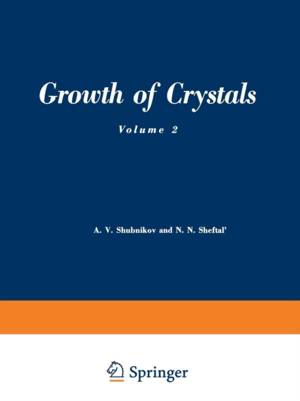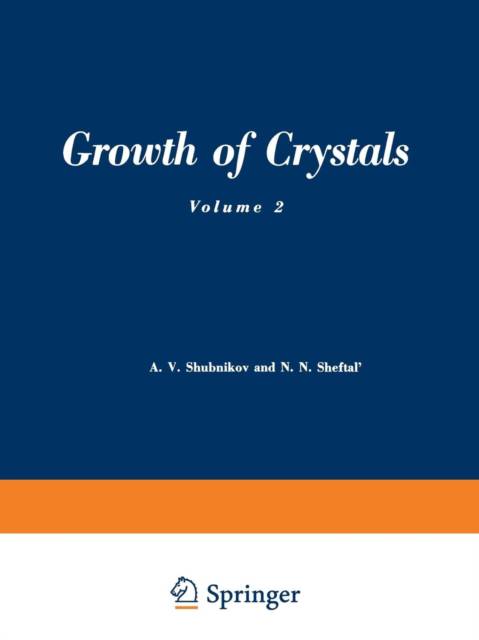
- Afhalen na 1 uur in een winkel met voorraad
- Gratis thuislevering in België vanaf € 30
- Ruim aanbod met 7 miljoen producten
- Afhalen na 1 uur in een winkel met voorraad
- Gratis thuislevering in België vanaf € 30
- Ruim aanbod met 7 miljoen producten
Zoeken
Omschrijving
The first volume in the present series contained the papers read at the first conference on crystal growth. This second volume appears during the interval between the first and second conferences, and contains various papers on crystal growth, in addition to the late S. K. Popov's major contribution on growing synthetic corundum. The papers to some extent represent work that has been done in the USSR since the first conference. Some of the papers break entirely fresh ground. We hope that the series will act as a means of contact between Soviet scientists who work on crystal growth, or on producing technically important monocrystals. This contact between scientists is essential. Work on this important topic cannot advance unless such con- tact is brought about. A. V. Shubnikov and N. N. Sheftal' vii 1. THEORETICAL AND EXPERIMENTAL INVESTIGATIONS THE THERMODYNAMICS OF CRYSTALLIZATION PRESSURE V. Ya. Khaimov-Mal'kov It has often [1-14] been observed that crystals growing in a medium containing foreign particles repel the particles as well as trap them. Our photographs (Figs. 1,2, and 3) show such repulsion. Lavalle [4] was the first to notice the effect in 1853. There is as yet no agreement in explanation for the effects, nor is there any agree- l ment in data onthe pressures that may occur. Somegive values of 10 kg/ cm or so [3-5. 10], others only a few g/cmt [6,7,12,14]. The latter value has been adopted in monographs on crystal growth [l3, 15].
Specificaties
Betrokkenen
- Auteur(s):
- Uitgeverij:
Inhoud
- Aantal bladzijden:
- 178
- Taal:
- Engels
Eigenschappen
- Productcode (EAN):
- 9781475704730
- Verschijningsdatum:
- 14/06/2012
- Uitvoering:
- Paperback
- Formaat:
- Trade paperback (VS)
- Afmetingen:
- 210 mm x 279 mm
- Gewicht:
- 444 g

Alleen bij Standaard Boekhandel
+ 167 punten op je klantenkaart van Standaard Boekhandel
Beoordelingen
We publiceren alleen reviews die voldoen aan de voorwaarden voor reviews. Bekijk onze voorwaarden voor reviews.











